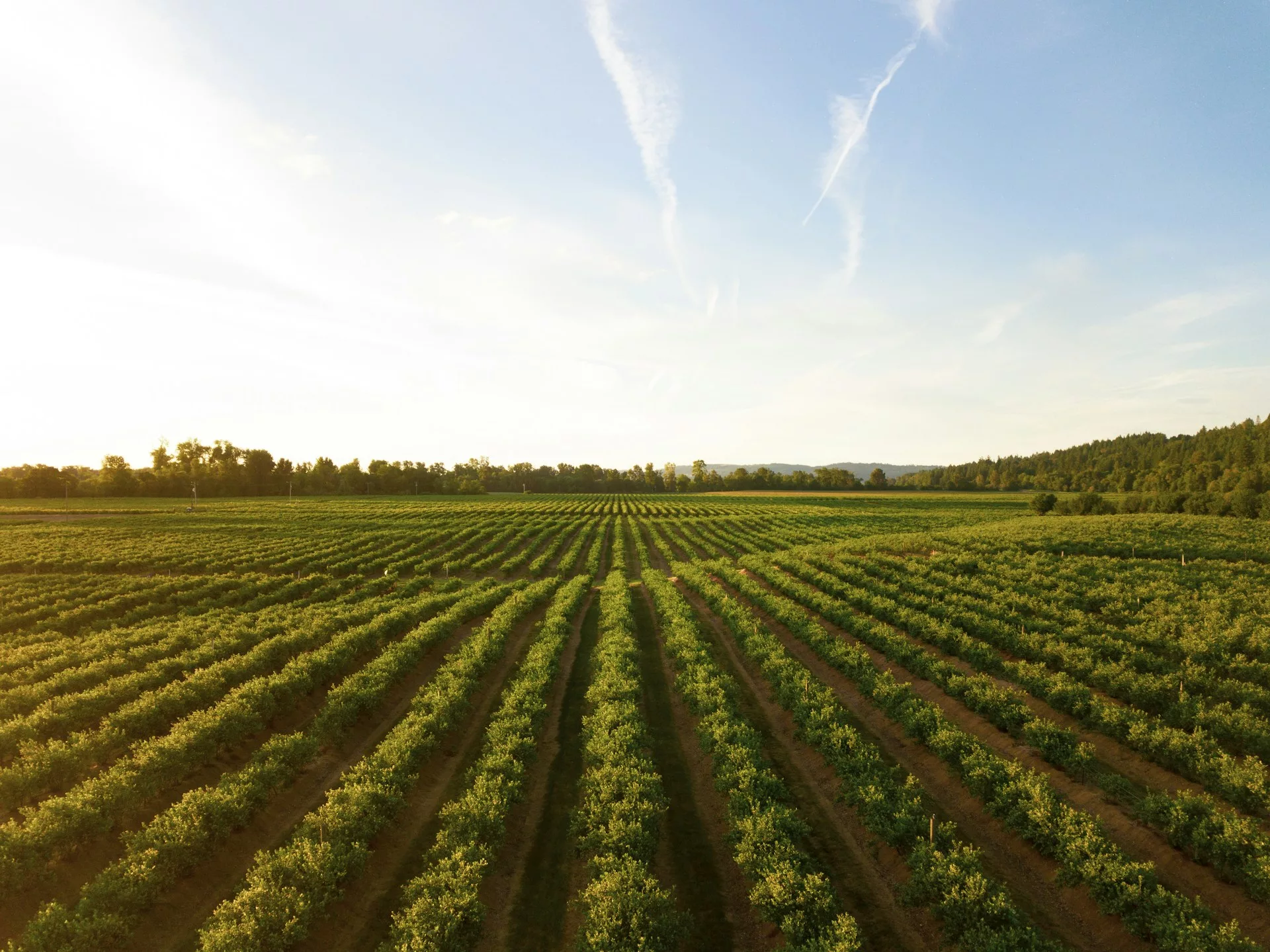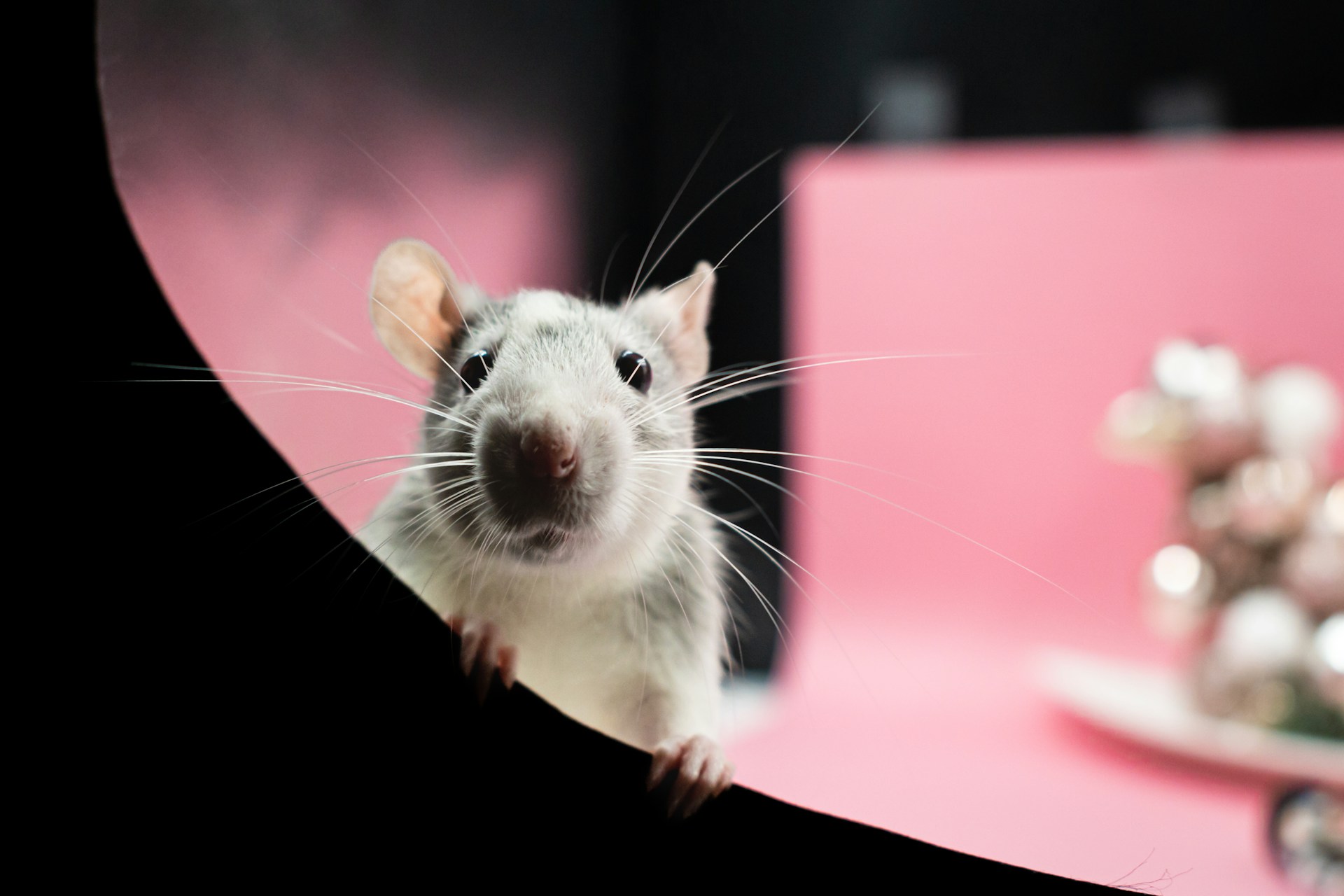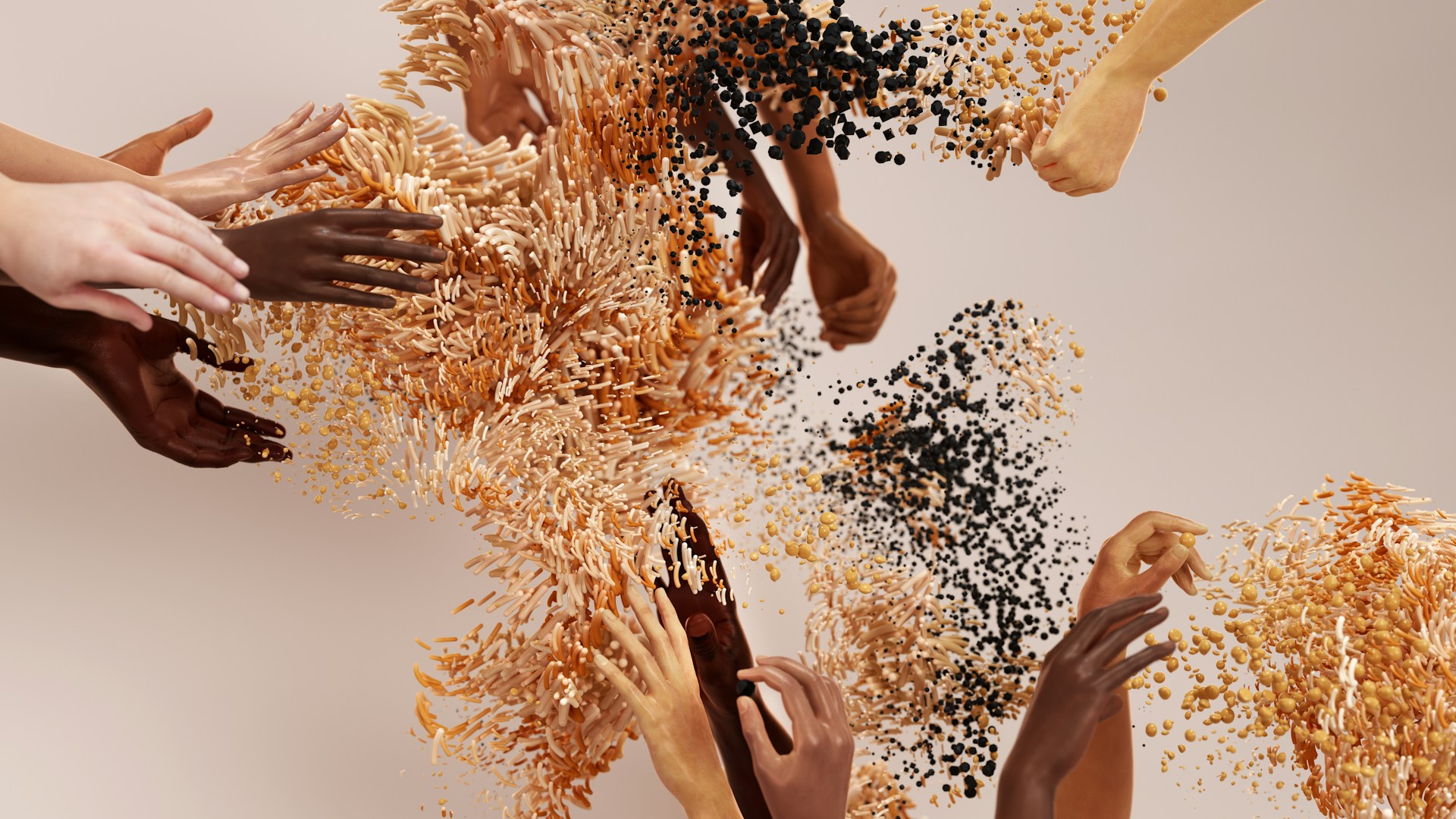The transition from hunter-gathering to domestication was a remarkable innovation. Since then, science has enabled the increasing population to be fed, but the consequences of doing so are now being evident. Photo credit: Dan Meyers via Unsplash
Innovation is one of the most unique facets of human beings, and innovations in agriculture have acted as a catalyst for social development over the last 12,000 years. The first agricultural revolution introduced the domestication of plants and animals. It took place in several agricultural centres around the world (Middle East, northern China, Central America, Andes, and others) and forever changed human societies.
Despite the generally nutritionally inferior diet of farmers as opposed to their hunter-gatherer counterparts due to a decrease in food diversity, the security of an agricultural diet and sedentary living freed up time for some people to focus on elements of society that did not directly pertain to food production such as art, culture, and administration. This, in turn, led to the development of more complex cultural and social structures and technological advancements, which laid the bedrock for our societies today.
Agricultural techniques have continued to advance over the millennia that have passed since its inception. These methods have largely aimed to maximise food production and minimise agricultural risk, but they have also come with unintended consequences as contemporary practices are increasingly taxing the environment and inadvertently endangering human health.
…the security of an agricultural diet and sedentary living freed up time for some people to focus on elements of society that did not directly pertain to food production such as art, culture, and administration.
The second agricultural revolution coincided with the Industrial Revolution in Britain in the 18th century and focused on planting high-yielding varieties of crops, such as wheat and barley, and using machinery as well as adapted planting methods to increase output. These adaptations changed the nature of farming and land ownership in Britain and brought about a new era of agricultural productivity.
The third revolution, dubbed the ‘Green Revolution’, came in the 1950s and introduced aspects of bioengineering to the agricultural toolkit. This movement aimed to increase food production and address food shortages in developing nations undergoing high population growth. Dr Norman Borlaug, largely regarded as the father of the Green Revolution, was awarded a Nobel Peace Prize in 1970 for his work in improving the productivity and resilience of wheat varieties in Mexico and, later, Pakistan and India. Dr Borlaug crossbred semi-dwarf (short-statured and strong-stemmed) with disease-resistant wheat varieties, creating a new cultivar with a yield potential two to three times higher than wheat varieties before the Green Revolution.
There were successes and drawbacks to the Green Revolution. It was widely successful in increasing crop yields in developing nations, with rice and wheat production doubling from 1966 to 1990, from 257 million tons to 520 million tons for rice and from 308 million tons to 541 million tons for wheat worldwide. The increased yield also lowered the production price, ensuring even greater food security among low-income families in developing nations. Furthermore, the new dwarf varieties of rice and wheat required fewer acres to plant, decreasing the total land needed to produce the same yield as traditional varieties, which was thought to make them more ecologically sustainable.
Nevertheless, the modified varieties required higher water input and the application of synthetic fertilisers to maintain these elevated yields. Furthermore, the application of synthetic pesticides to protect the crops became more widespread during this time. Contemporary industrial agriculture is now dependent on these practices and has adopted additional methods such as mechanisation, monoculture farming, the genetic modification of plants and animals, and a trend toward separating crop cultivation from animal management. The harmful consequences of these practices are now coming to light.
Contemporary industrial crop cultivation is depleting freshwater resources, eroding beneficial topsoil, decreasing biodiversity, causing widespread pollution, and endangering human health. Agriculture alters natural habitats and repurposes them for human food production. It is estimated that 46% of habitable land on Earth is currently being used for agriculture compared to the 1% occupied by settlements and infrastructure, which is due to increase with an exponentially growing population.
The diversion of water for agriculture is depleting aquifers, river systems, and downstream groundwater. The United Nations estimates that agriculture now accounts for 70% of global freshwater withdrawals. Furthermore, the areas where water is being diverted are increasingly subjected to salinisation and desertification, leading to water sources drying up and previously arable land becoming unusable for agriculture or indeed unsupportive of life, contributing to a devastating decline in biodiversity.
By contrast, the overirrigation of agricultural land can lead to waterlogging of soils, which can poison the very plant roots they hope to nourish. Mechanised tillage used to prepare land for planting disturbs the natural soil structure, increases surface runoff, and can release soil CO2 into the atmosphere. Furthermore, the excess use of synthetic fertiliser affects the chemical and microbial balance of soils and can lead to soil degradation, nitrogen leaching, reduction of soil organic matter, and a loss of soil carbon.
Topsoil is an essential resource because it contains nutrients plants need to survive, filters and cleans water, helps reduce the risk of flooding, and is the largest terrestrial store of carbon, making it crucial in regulating climate. However, soil, like water, is a finite resource: it can take up to 1,000 years to generate 1 centimetre of fertile topsoil, and current rates of degradation are surpassing rates of renewal. Nitrogen and phosphorus runoff from synthetic fertilisers can also pollute waterways, causing eutrophication.
Eutrophication is the process in which a body of water becomes enriched in nutrients, leading to an overgrowth of microorganisms and oxygen depletion which can endanger aquatic life and cause serious ecological imbalance. Global biodiversity across different habitats is decreasing due to human activities such as the change in land use, overconsumption of natural resources, pollution, and climate change, to which agriculture is a significant contributor.
The monoculture planting of modified varieties (MVs) and genetically modified organisms (GMO) also decreases genetic diversity in cultivated plants. Genetic modification may introduce the risk of toxins or allergens in animal and human diets when genes of unrelated organisms are combined. Furthermore, the decrease in crop diversity leads to a decreased resistance to new pathogens and pesticide-resistant weeds and insects, leaving crops vulnerable to attack. The increased adaptability and reduced susceptibility of pest populations are leading to an increased use of pesticides.
It is estimated that global pesticide consumption has increased 57% since 1990, reaching 2.66 billion kg in 2020. Moreover, only 0.01% of applied pesticides reach their target pests, leaving the remaining 99.9% to impact the environment. The overuse of pesticides is killing off beneficial insects, such as pollinators (bees and butterflies), and birds. It is also making its way into rivers and oceans, affecting freshwater and marine life. While many pesticides may be safe for human use, others can bioaccumulate in body fat and be harmful to animal and human health. It has been estimated that there are 385 million cases of unintentional pesticide poisonings per year, with approximately 11,000 deaths. Some have also been linked to cancer and problems with immune, reproductive, endocrine, and nervous system health.
With over 1,000 pesticides used globally, there is a growing need for policies regulating pesticide use and research on their long-term effect on the ecosystem and human body. Greater transparency between producers and consumers and the labelling of genetically engineered foods may also mitigate the health risks of consuming different foods that are genetically modified and require high rates of pesticide use.
While crop cultivation is taxing on the environment, it only accounts for one-third of global agricultural land use, while two-thirds is used for livestock grazing. Furthermore, of the cereals grown in Europe, only a third are consumed by humans, with nearly two-thirds reserved for animal feed. Land-clearing for livestock grazing grounds is a major cause of deforestation.
Meanwhile, overgrazing of pastureland is another source of topsoil erosion and compaction. Livestock farming is also a major contributor to the overconsumption of water, with around 15,000 litres of water needed to produce 1 kg of beef. Additionally, methane emissions from cattle have been identified as a significant contributor to climate change. It is now estimated that one-quarter of greenhouse gas emissions can be attributed to agricultural production, exacerbating the global climate crises.
In order to streamline meat, dairy, and egg production while minimising cost and resource use, there has been a rise in factory farming. Factory farms are typically industrial facilities where farm animals are intensively raised in limited space. Aside from the ethical implications of these practices, they may be endangering human health. Animals kept in close quarters are far more likely to contract and spread diseases that may eventually mutate and transmit to human hosts. These are called zoonotic diseases and have led to several devastating pandemics in recent years, including bovine tuberculosis, H7N7 bird flu, and the H1N1 swine flu.
Most factory farms keep livestock on a steady course of antibiotics to prevent the spread of diseases and keep animals healthy. However, evidence suggests that antibiotic overuse in livestock is increasingly leading to the development of antibiotic-resistant strains in humans dubbed ‘superbugs’. These untreatable bacteria are projected to cause 10 million deaths annually by 2050 if no action is taken. Industrial livestock farming is a significant contributor to what could become some of the most-deadly health conditions on earth.
Scientific innovations have addressed many of the world’s most pressing concerns, such as adequate food production for a growing population (2.7 billion in 1955 and 8 billion in 2023), but the unintended consequences of some of these innovations continue to have devastating effects on the environment and human health. While replacing the agricultural systems that humanity presently depends on will not happen overnight, farming practices must begin to make changes to create more sustainable, resilient, and safe food production systems.
Scientific innovations have addressed many of the world’s most pressing concerns… but the unintended consequences of some of these innovations continue to have devastating effects on the environment and human health.
Sustainable farming is a growing movement and involves practices that work with the ecosystem to mitigate agricultural risks and minimise environmental impact. Some of the methods which characterise sustainable and regenerative farming include maintaining soil microbial health by eliminating mechanised tillage, and minimising or eliminating the use of synthetic fertilisers and pesticides. They also involve practices such as crop rotation, fostering plant biodiversity through multiple cropping and agroforestry (combining agriculture and trees), integrating livestock and crop farming, and implementing rotational grazing.
Foods farmed in environmentally sustainable ways also tend to be more nourishing and less harmful to human health. Regenerative agriculture may also incorporate biogenetic and technological advancements but in ways that work holistically with the agricultural ecosystem (genetic engineering for drought resistance in crops, promoting diversity through polyculture farming, using technology for precision farming, etc.).
Nevertheless, having experienced the price of progress over the last half-century, additional policies must be put in place to monitor and regulate innovations in farming. There is a need for greater transparency and information transfer between producers and consumers, who are increasingly more removed from the food systems that sustain them. The fourth agricultural revolution will need to integrate environmentally sustainable practices and a more holistic view of food production to ensure the health and longevity of the environment and humanity for generations to come.





